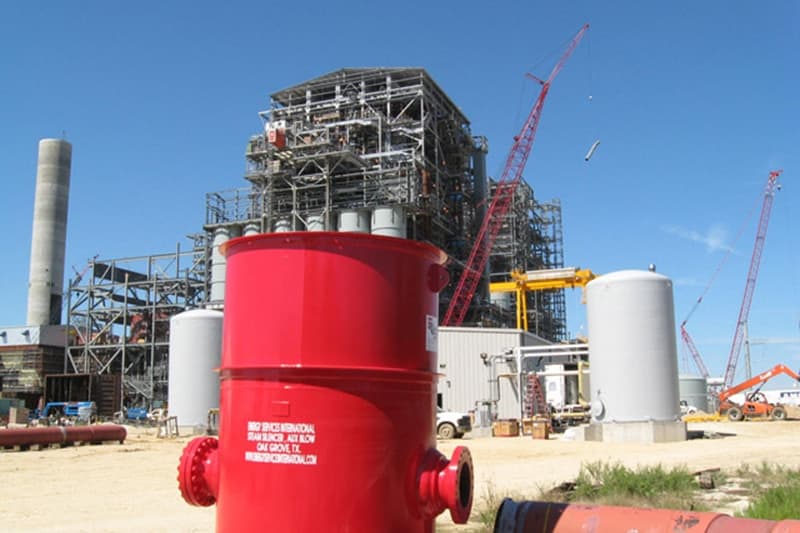- Home
- About
- Services
- Air Blow Cleaning Services
- Oil Filtration Services
- Chemical Cleaning
- Filters & Breathers
- Fluid Reconditioning Services
- Hydraulic System Decontamination
- Hydrolazing
- Hydrostatic Testing
- Oil Flushing
- MHC & EHC Flushing
- Reservoir and Tank Cleaning
- Steam Blowing
- Varnish Mitigation & Removal
- Additional Services
- Equipment Fleet
- Our Brands
- Projects
- Get A Quote
- Contact
Challenges to Combined-Cycle Plant Steam Blowing Procedures
Combined cycle plants using gas and steam turbines in parallel present a special set of challenges during cleaning. Any missed debris can cause millions of dollars of damage to the steam turbine if the procedure is performed incorrectly, and variances in pressure tolerance between a steam and gas turbine often mean steam blowing must be done in sections.
Several specific design factors must be carefully planned for in a combined cycle steam blow operation. RIG’s technicians always perform a plant walk down prior to steam blow services, but combined-cycle plants require extra engineering and planning time to address the following:
- Stage Planning – Multiple blow stages are often required in combined cycle plants. When more than one Once Through Steam Generator (OTSG) or Heat Recovery Steam Generator (HRSG) is present, they will all need to be run and cleaned simultaneously due to internal temperature gradients but may require different steam pressures for effective cleaning. In addition, piping configurations may require several cleaning stages to ensure every section of pipe is addressed safely. Proper stage and section planning are the most critical part of a combined cycle plant steam blowing procedure.
- Minimizing Water Requirements – Steam blowing requires water and most combined cycle plants have minimal water reserves on-site. When required, a temporary water source with boiler feed quality water may be brought in. But this is expensive, so we make sure to design a steam blowing process that minimizes water requirements for feed water, attemperating water, and quenching water but still gets the job done with a CFR greater than one.
- Thermal Cycle Planning – Thermal cycling is a technique we use during combined-cycle blows to make the process more efficient. During thermal cycling we cool piping down periodically so that mill scale and particulates are dislodged during expansion and contractor and are carried away on the steam flow during cleaning. Pipe configurations and cooling techniques must be evaluated and planned for ahead of time.
- OTSG or HRSG Feed Rates – Water feed rates to the (OTSG) or (HRSG) will be used to control steam flow during blowing. This is different than in regular steam blowing procedures where throttling mechanisms are used. Steam rates must be calculated to ensure a cleaning force ratio greater than one is achieved, but also have to be coordinated with gas turbine load settings. If multiple steam pressures will be required, steam attemperating may be required to meet the blow conditions but stay within designated maximum expansion limits.
- Sound Control – This requirement is not unique to combined cycle plants, but may require more temporary piping than normal setups. To ensure worker safety, allow other operations to continue during steam blowing, and safely collect debris, temporary piping is run from blow points to silencers. Silencers absorb sound, collect debris and exhaust steam upwards. We also bring steam temperatures down to saturation just before entering the silencers to further quench noise levels. But, all the temporary piping we plan to use must be engineered to be ASME B31.1 compliant and able to handle maximum blow conditions.
We have successfully completed combined-cycle steam blows throughout the U.S. and around the world. An experienced steam blow procedure company can mean the difference between extending your plant equipment’s life and millions of dollars in re-work and repairs. If you have any questions about steam blowing, combined cycle pre-commissioning or preventive maintenance, please reach out to talk with one of our technicians: 800-770-4510.


